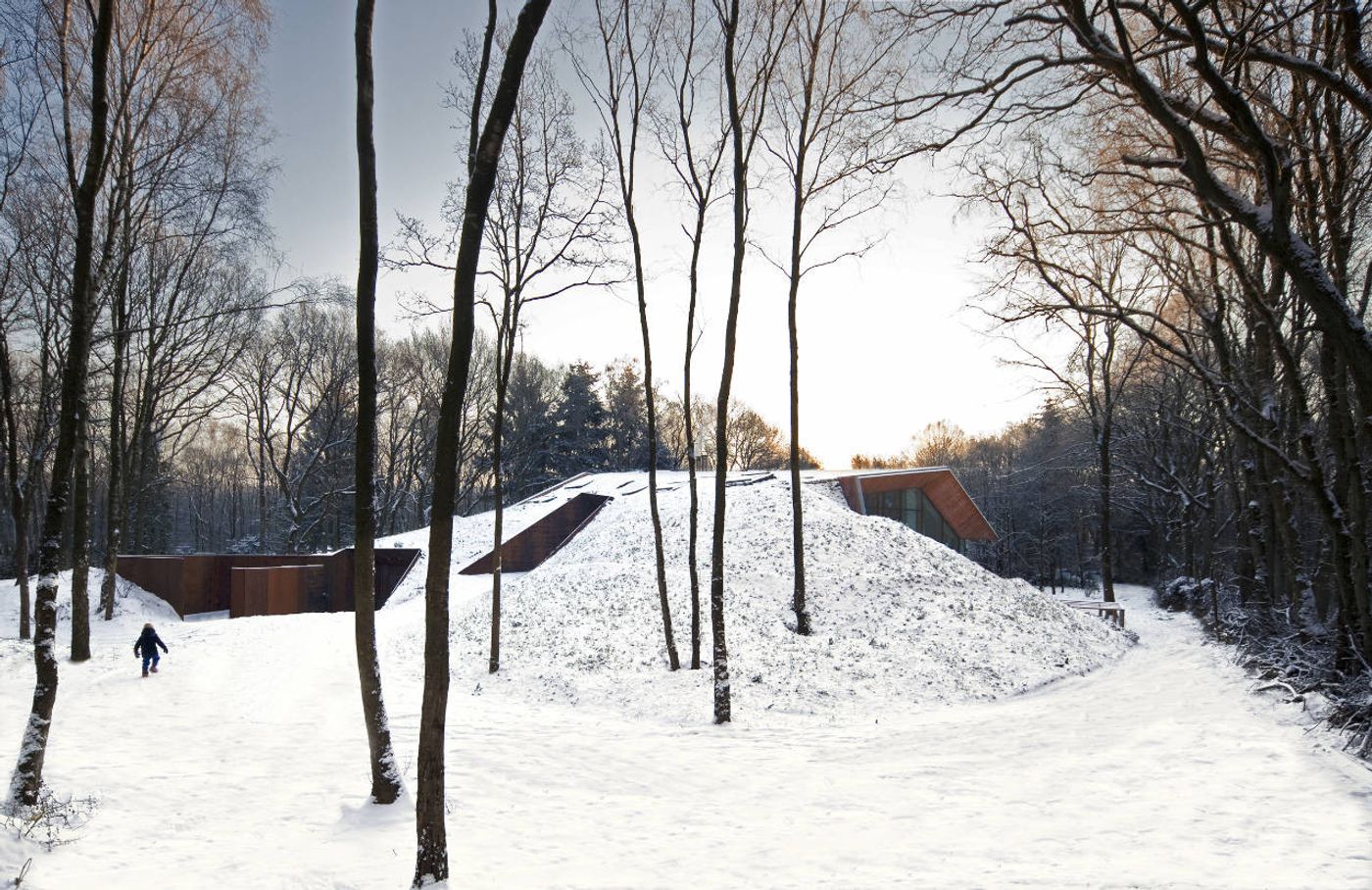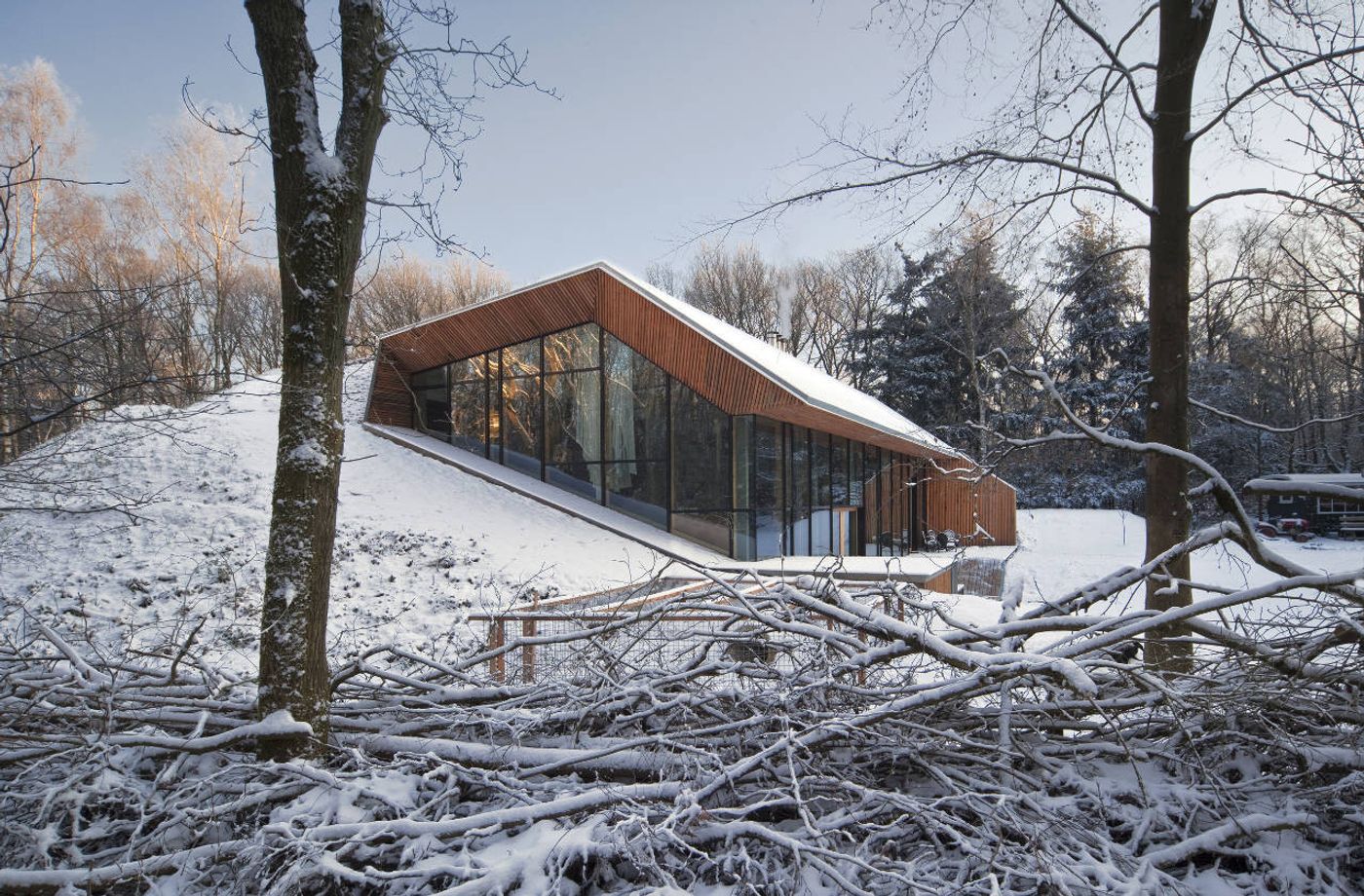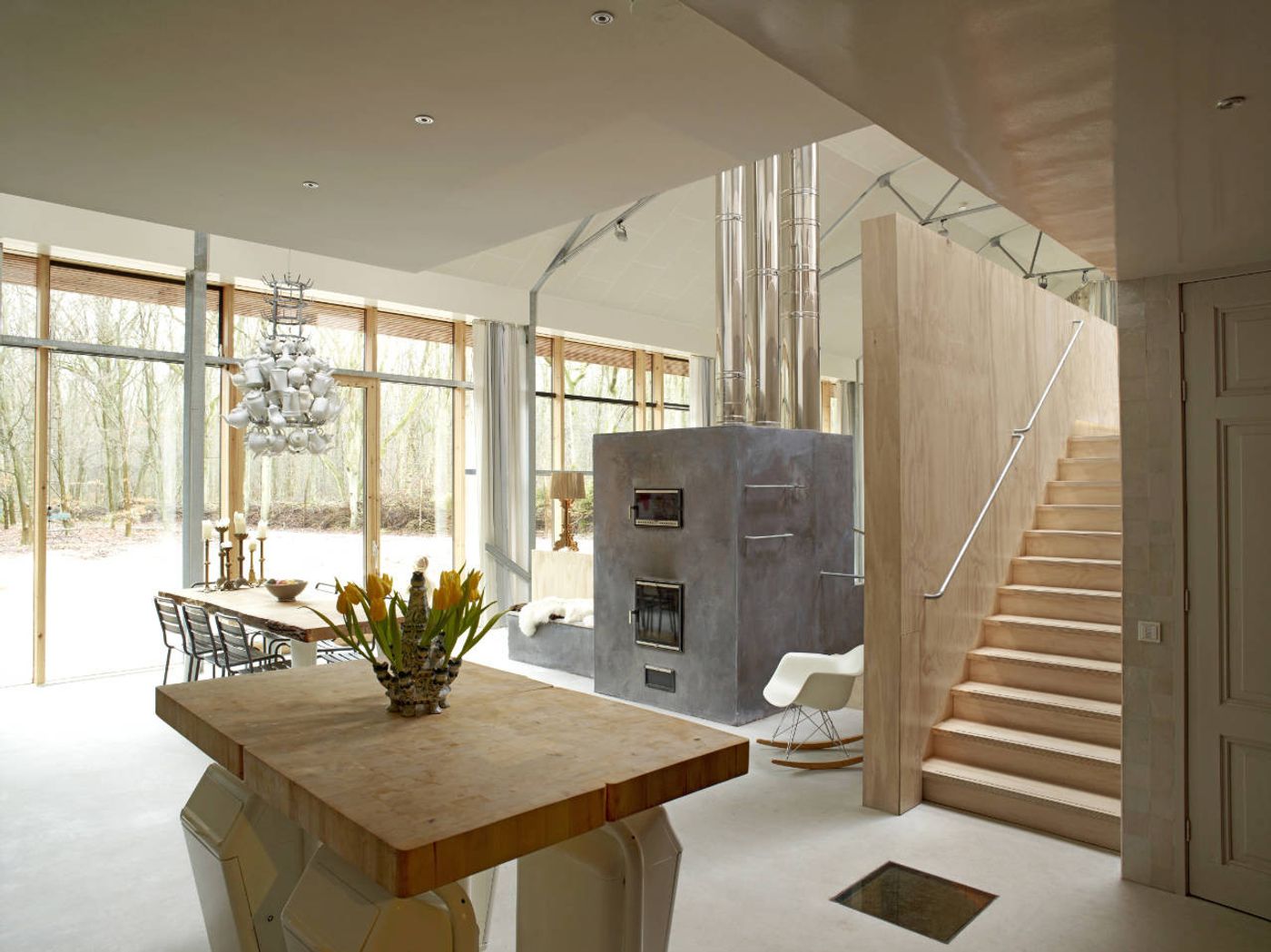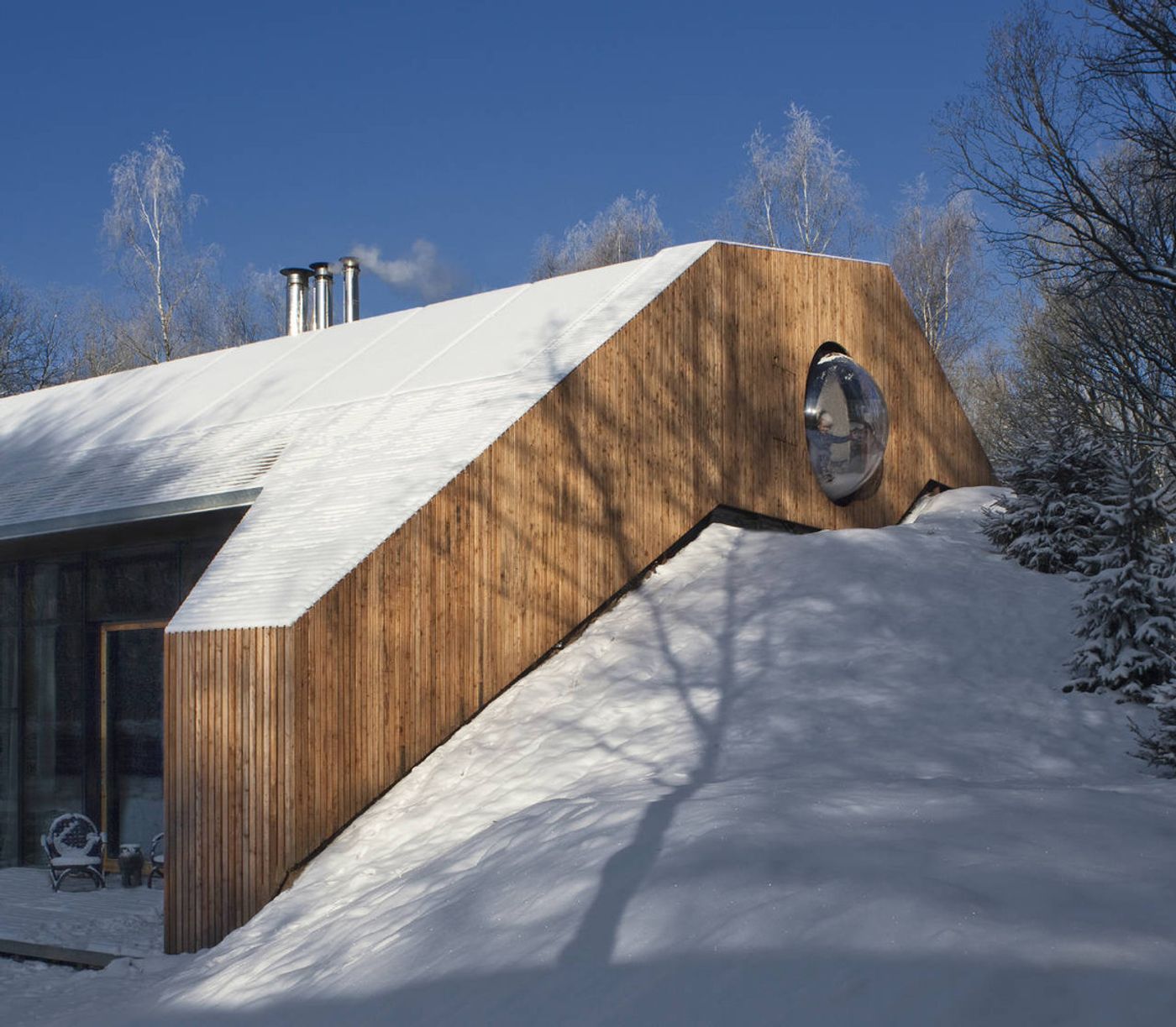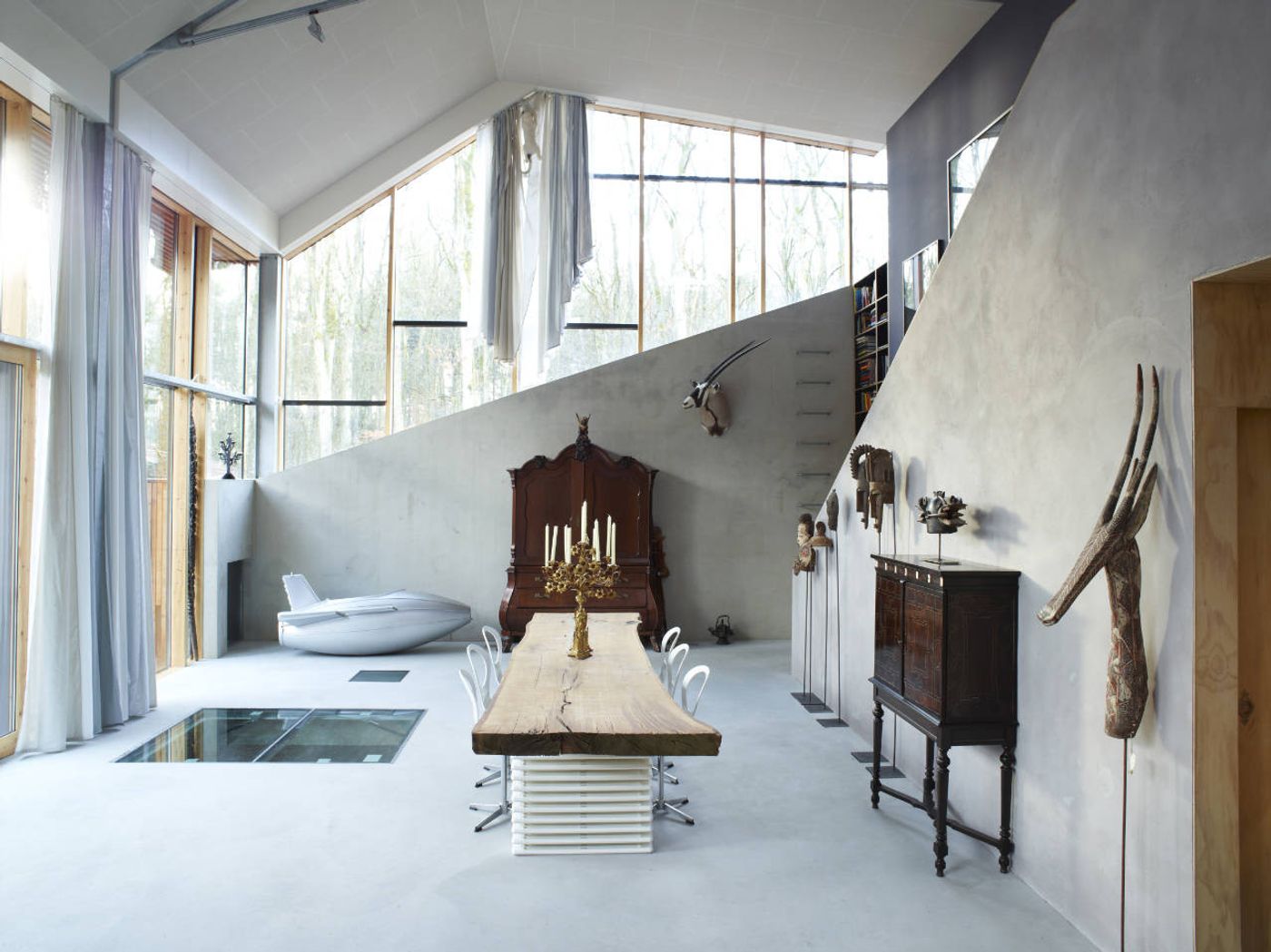
Dutch Mountain by Denieuwegeneratie
Words by Tina Komninou
Location
Completed in December 2011, this private residence stands as a testament to thoughtful design, seamlessly blending into its natural surroundings. Located on a historical agricultural plot amid hayfields and woodlands in a Dutch nature reserve, the house occupies a rare, gently hilly landscape—a geographical feature uncommon in the Netherlands.
With only half of the structure visible to the naked eye, the house appears to cut through the hillside with striking glazing, offering breathtaking views that stir a sense of wonder. The design’s integration with the environment is both visually arresting and functionally intelligent, capturing the viewer’s attention with its unexpected elegance.
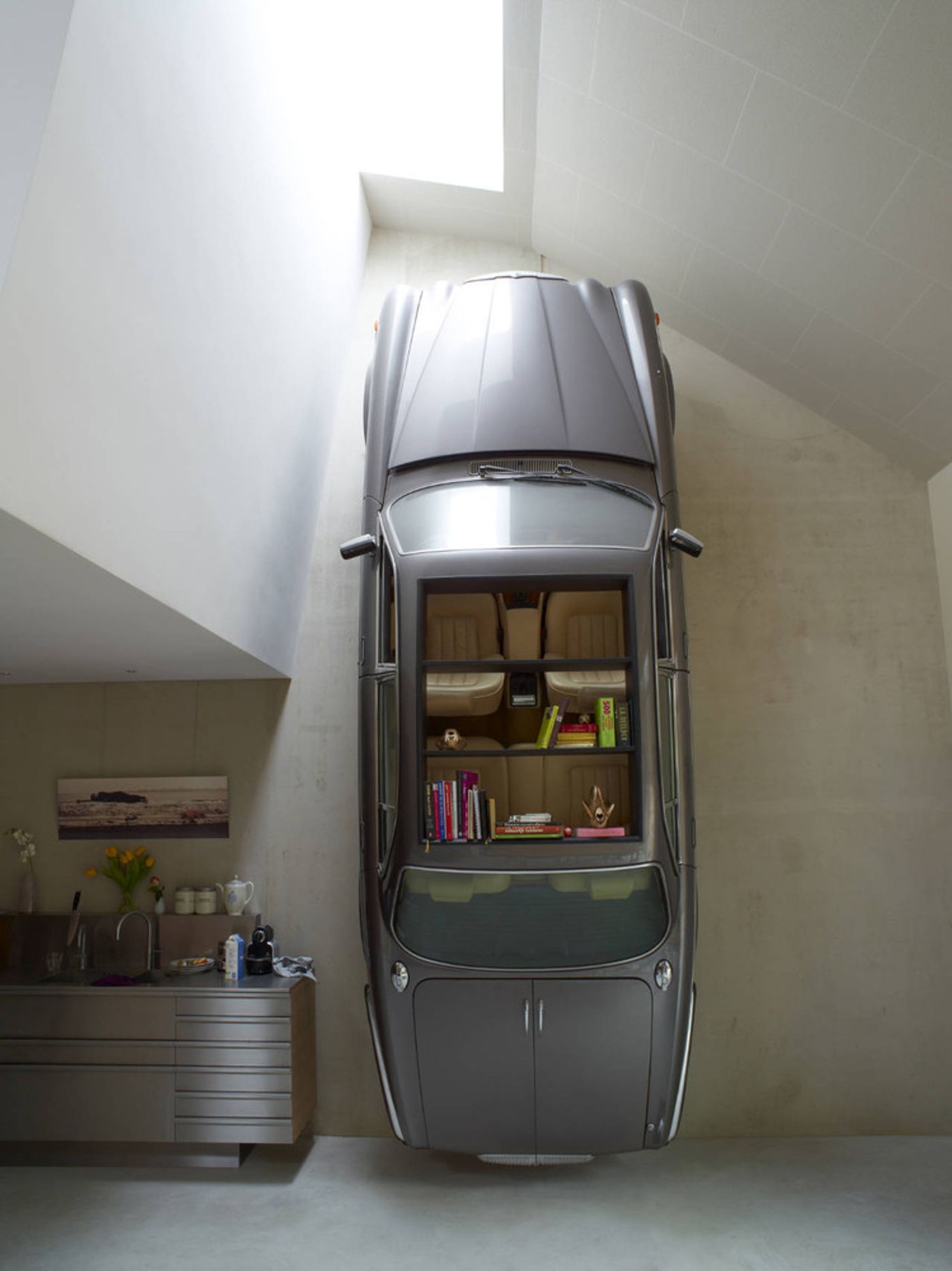
Photo © Jaap Vliegenthart
The structure’s embedding within the hill serves a dual purpose: camouflaging the house from the north side while utilizing the earth’s natural thermal insulation. This design ensures year-round energy efficiency by moderating interior temperatures. Visitors enter the house through the mountain itself, flanked by slowly corroding scrap steel panels that create a raw, industrial aesthetic in stark contrast to the surrounding landscape.
The south-facing glass facade, framed in locally sourced larch wood, blurs the line between artificial structure and natural environment. The timber, harvested from the immediate surroundings, adds a sense of cohesion to the site. Above the glass wall, a cantilevered canopy extends outward, regulating sunlight throughout the seasons. The spacious terrace runs the entire width of the house, following the split-level ground floor before rising toward the western facade, where it shelters a henhouse beneath its structure. The continuous flow of the terrace—from ground to facade and back up to the canopy—emphasizes the organic relationship between the building and its topography.
This fluidity extends indoors, where the design maintains an unbroken dialogue with the landscape. The concrete floors, window frames, and terrace finishes are seamlessly connected, ensuring a cohesive material language that reinforces the house’s spatial continuity. The large 20-square-meter glass facade acts as a natural canvas, framing the surrounding woodlands like a living artwork.
Within the 228-square-meter interior, flexible spaces allow for adaptive use over time. The architectural design incorporates movable walls and partitions, enabling rooms to be added or removed as needed. Natural light plays a central role in shaping the atmosphere; in the cave-like rooms, sunlight streams through deep incisions in the hillside, creating a dynamic interplay of light and shadow while emphasizing the geological contours of the landscape.

Photo © Jaap Vliegenthart
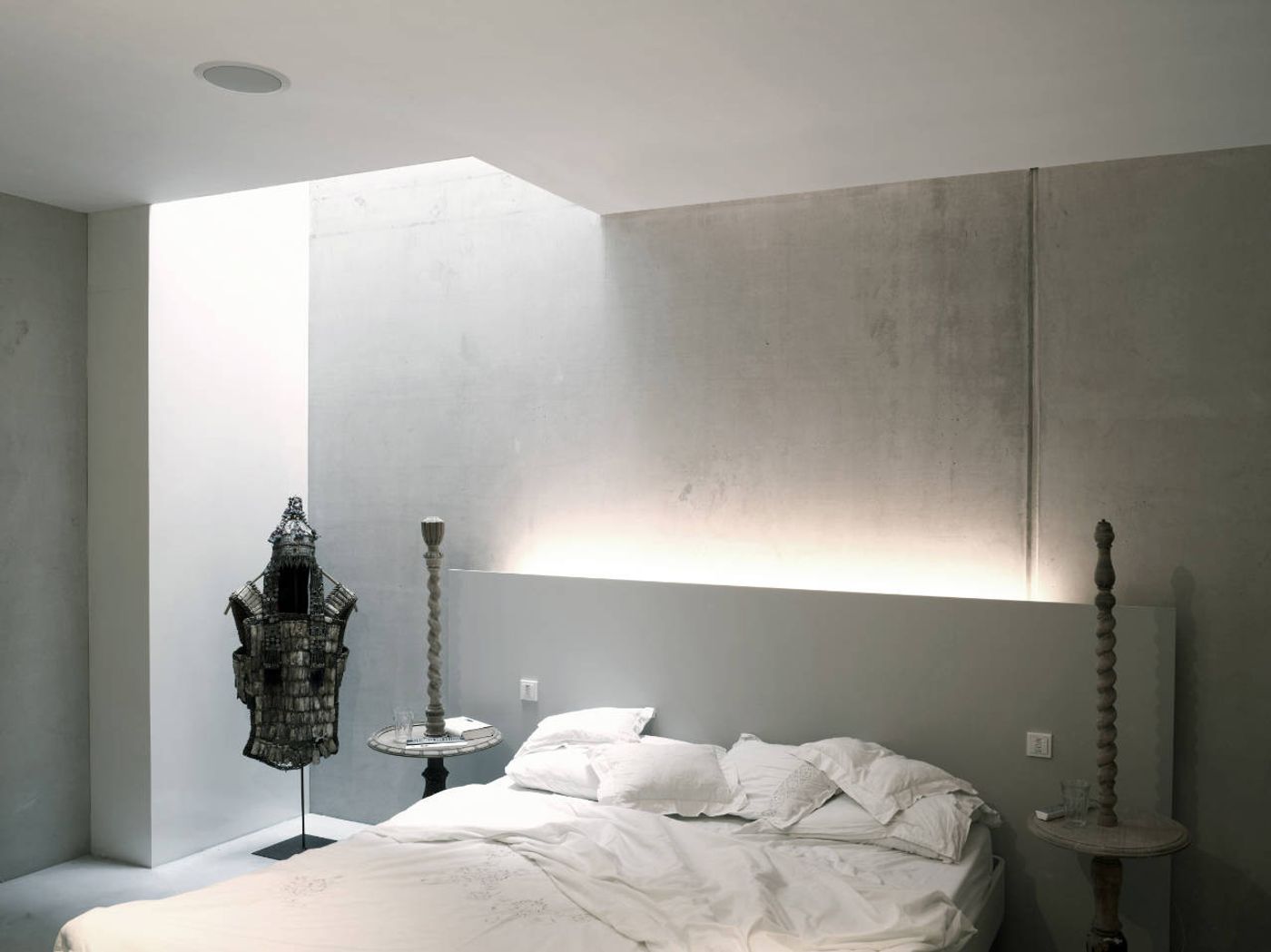
Photo © Jaap Vliegenthart
The project represents an experiment in sustainable architecture, combining structural design (the hardware) with intelligent technical systems (the software). These systems were developed in collaboration with Arup Amsterdam, a firm known for its innovative engineering solutions. The house’s shell exhibits a raw honesty: the concrete retaining walls—necessary to withstand the pressure of the hillside—remain unfinished, while the steel framework displays its visible welding seams. The untreated timber surfaces gradually weather with time, further connecting the structure to its natural context.
Inside, the interior design balances functionality with playful creativity. The architectural framework itself becomes an essential part of the aesthetic: from skateboard-inspired stairs to glazed floor openings that offer unexpected visual connections between spaces. The dramatic, Grecian-style curtains add a touch of theatrical elegance, while custom-designed furniture pieces contribute a sense of individuality. One particularly intriguing feature is the “car-shelving” installation—a whimsical nod to movement and transformation that encapsulates the spirit of the design.

Photo © Jaap Vliegenthart

Photo © Jaap Vliegenthart
Ultimately, this project is a study in balance: between nature and architecture, rigidity and playfulness, past and future. Every element has been meticulously considered—from the material choices to the spatial flow—resulting in a living environment that feels both grounded and extraordinary.
What remains is a home that speaks the language of its landscape: quietly integrated, deeply connected, and infused with a timeless simplicity. It is a space designed for life—to be experienced, enjoyed, and remembered.
